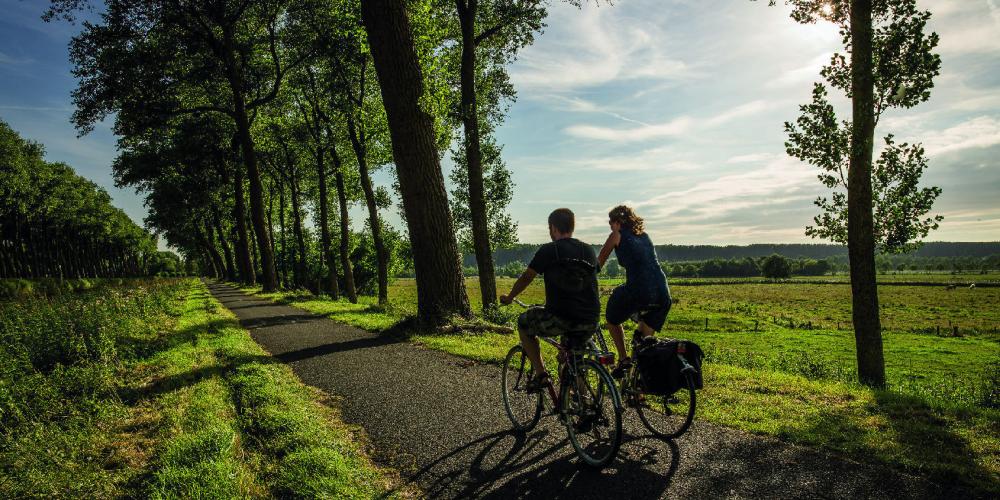Bruges' Wood- and Wetland

Here, in Bruges's wood- and wetland, the clock ticks slowler and the good life is all that counts. The pleasing canals, the open polders (that encourage cycling towards the coast), and the many historic buildings set amidst the greenery all add up to make a captivating region of great beauty and simplicity.
To the north-east of Bruges lies the charming town of Damme. Until the silting up of the tidal inlet Zwin, Damme was the transhipment port of Bruges. To reach the literary home of Tijl Uilenspiegel (Owlglass), you drive straight along the banks of the Damse Vaart (Damme Canal), which is one of the most beautiful pieces of nature in Belgium. The canal is lined with magnificent poplars, some of which are over 100 years old. Their wind-twisted trunks add to the charm of the setting.
It seems as if time has stood still in Lissewege. With its lovely little canal, white-painted polder houses and expansive fields, it serves as a model for the way every Flemish village used to be: charming, nostalgic, and romantic. The brick Church of Our Lady of Visitation is a textbook example of "coastal Gothic." Its interior has a miraculous statue of the Virigin Mary (1625), an exceptional organ case, and a beautifully sculptured rood loft and pulpit (1652).
Anyone who makes the effort to climb the 264 stairs of the truncated tower is rewarded with a panoramic view over the polders, stretching as far as Ostend and Bruges. Lissewege was already a place of pilgrimage in the Middle Ages. In a nearby creek, fishermen discovered the statue of the Virgin Mary and the church was built to house it. Pilgrims on the road to Santiago de Compostela stopped off in Lissewege and their gifts and donations helped to bring the village a certain prosperity. In 1106, French Benedictines were approached to establish an abbey in Lissewege. Due to their neglect, the land on which the Thosan Chapel stood passed into the hands of the Cistercians, who built the famous abbey complex of Ter Doest. Sadly, of all the abbey buildings, only the pigeon tower, the monumental gatehouse, and the enormous 14th century abbey barn have withstood the ravages of time.
The ideal way to discover the surroundings of Bruges is by bike. Make your own route using the new cycle network maps or follow the signposted Groene Gordel (Green Belt) cycle route.



